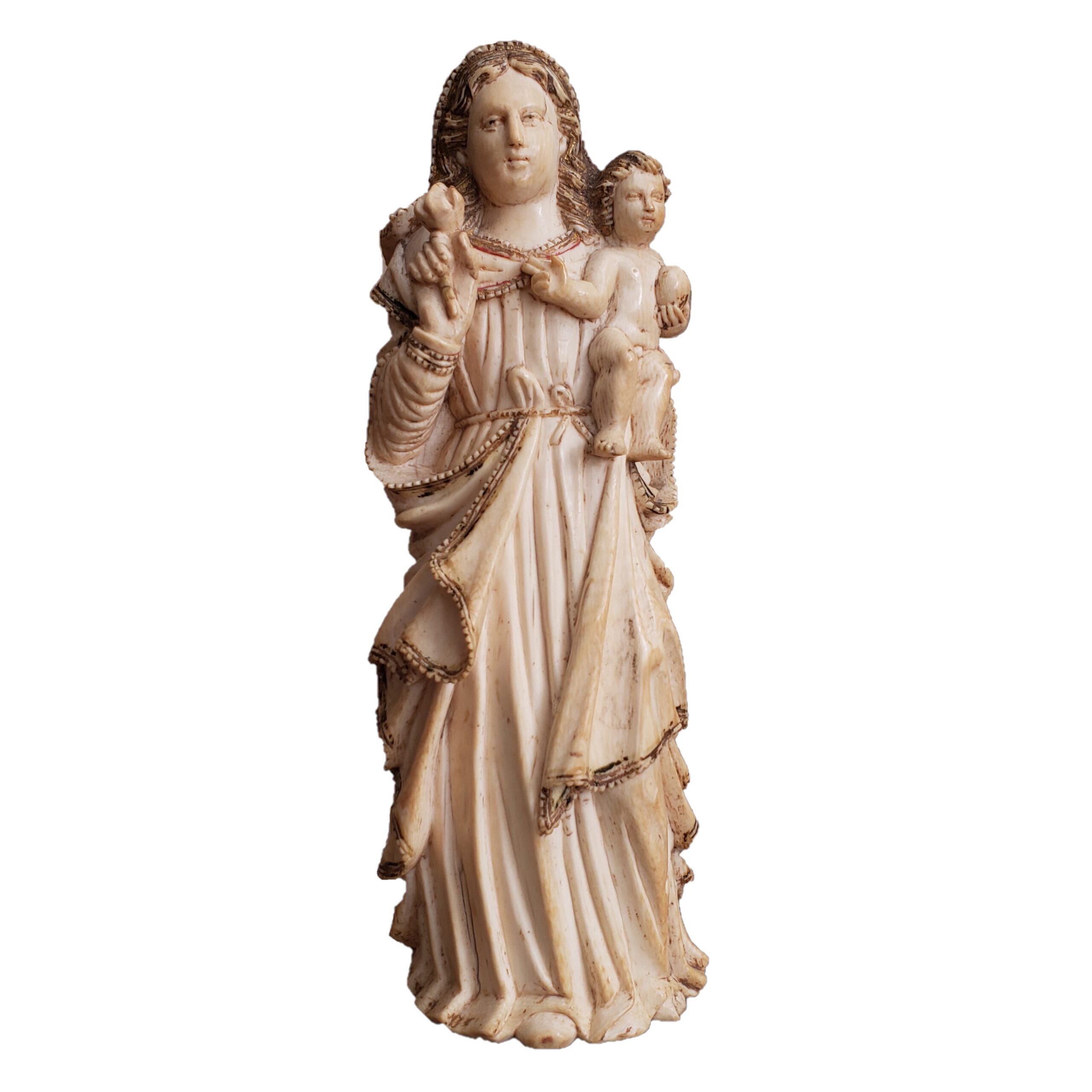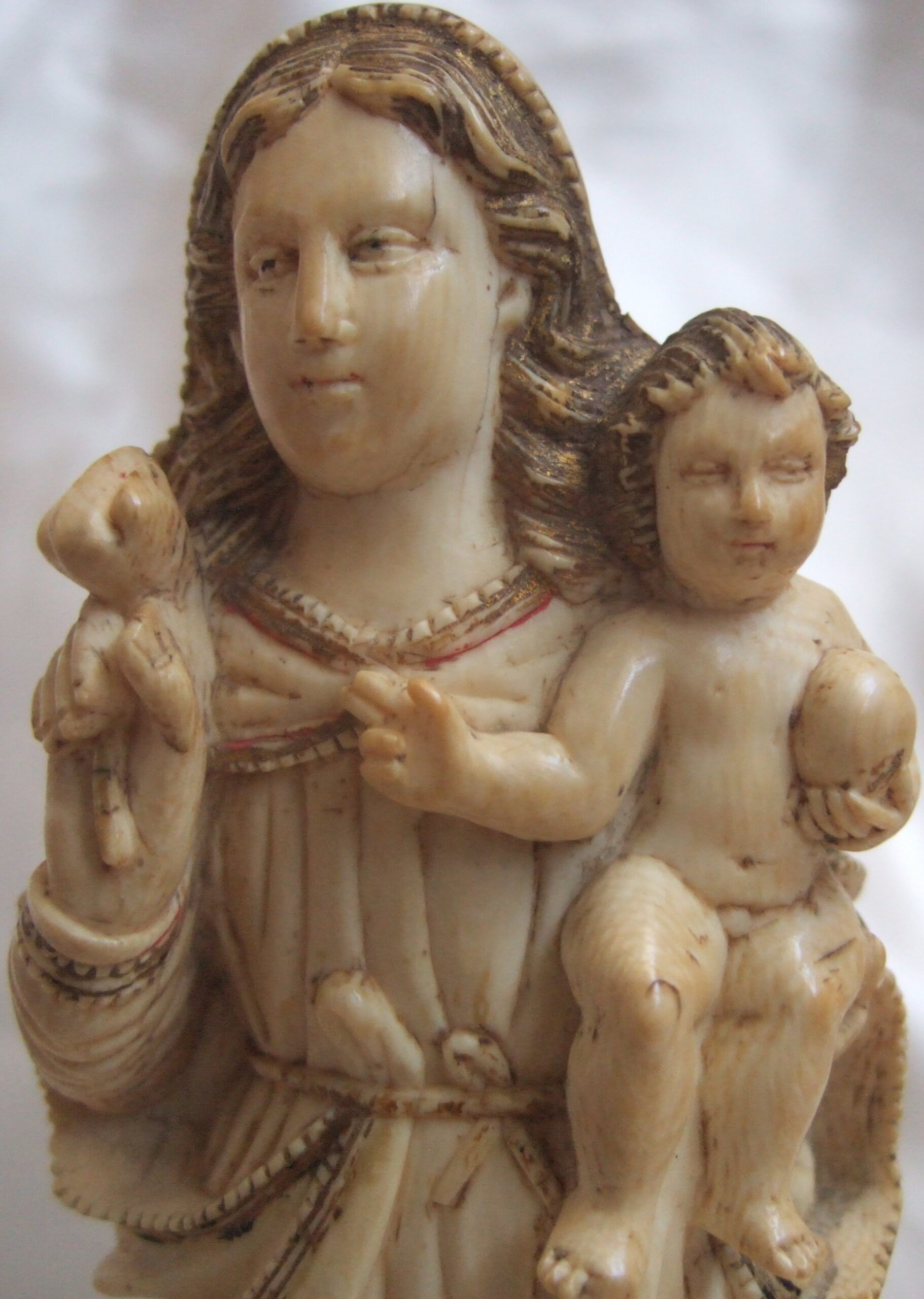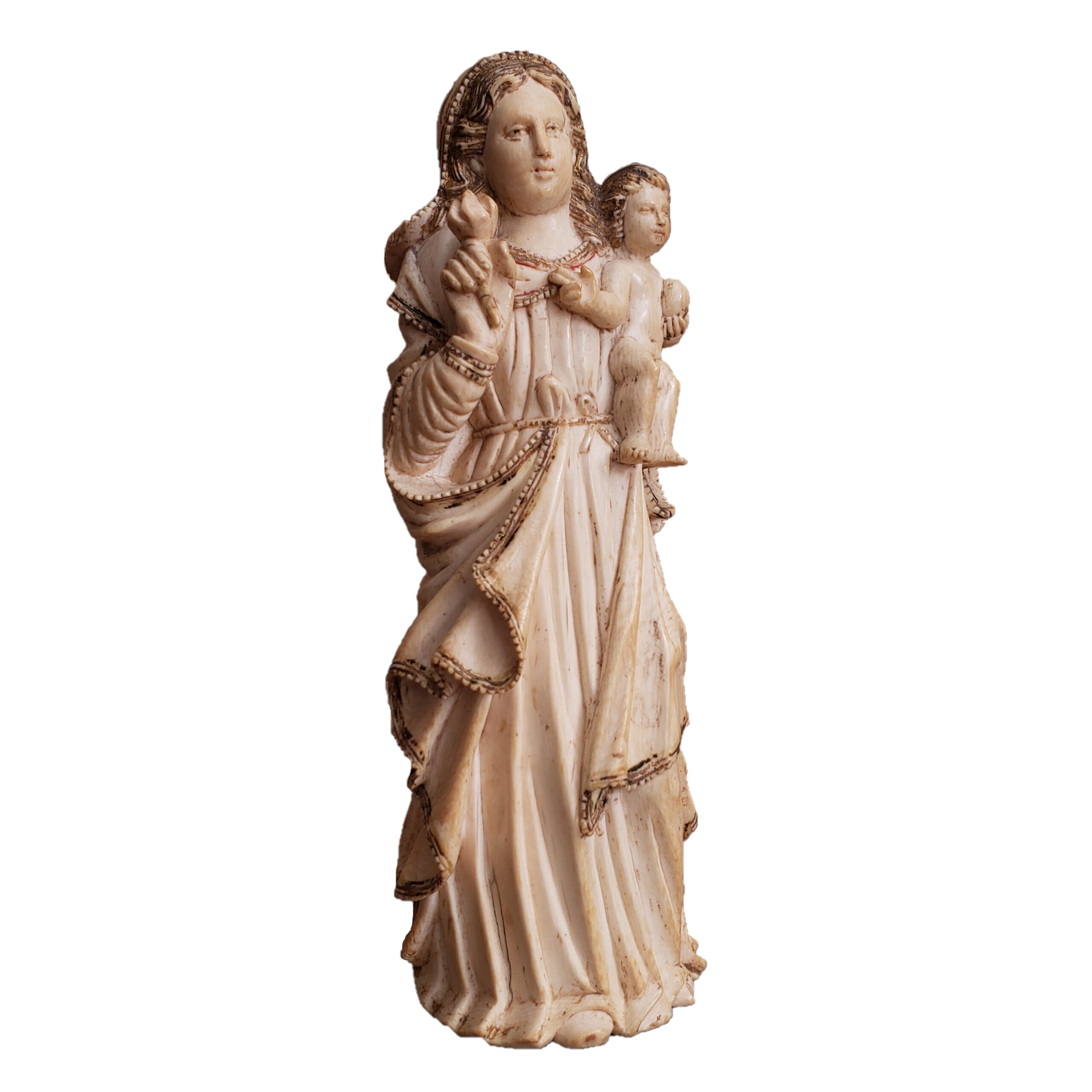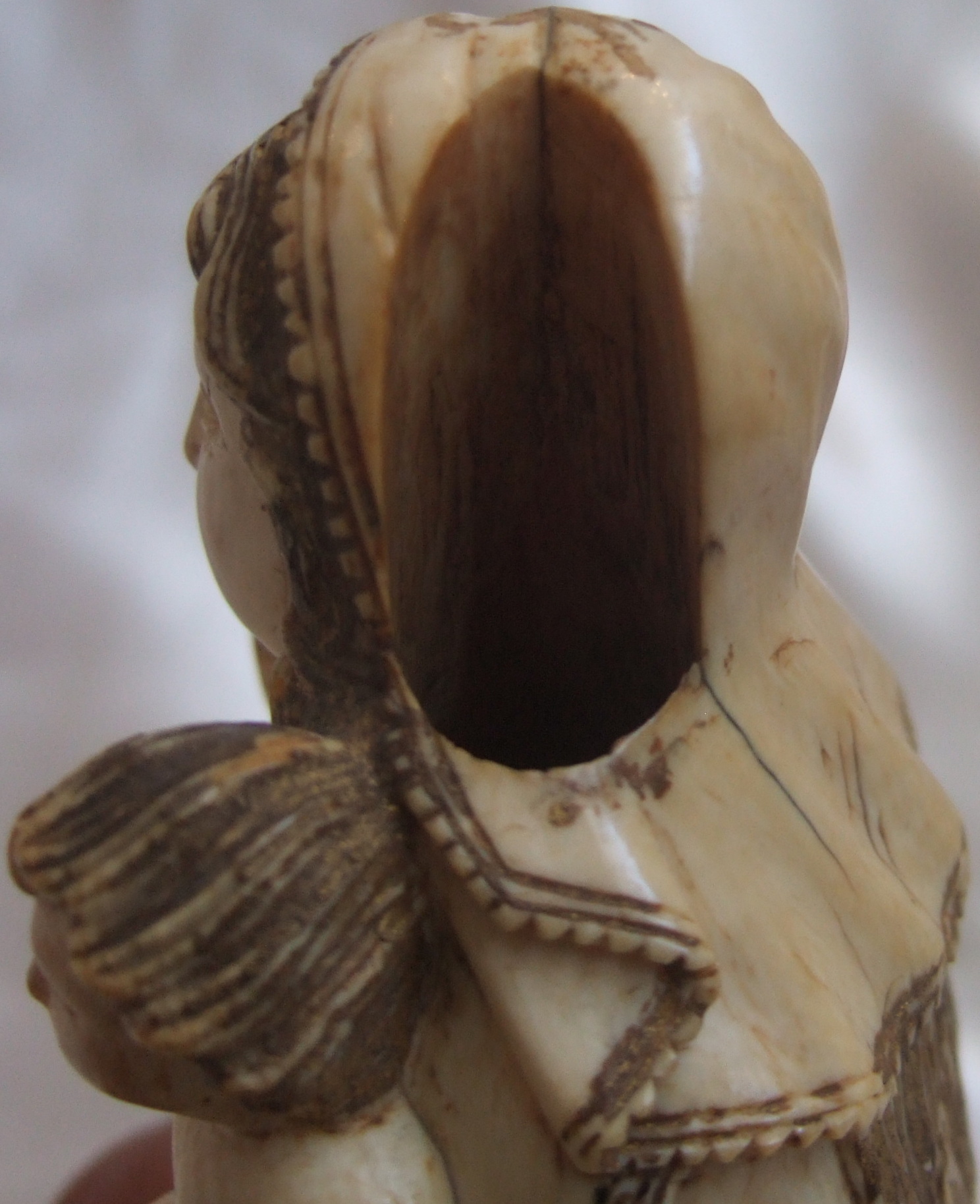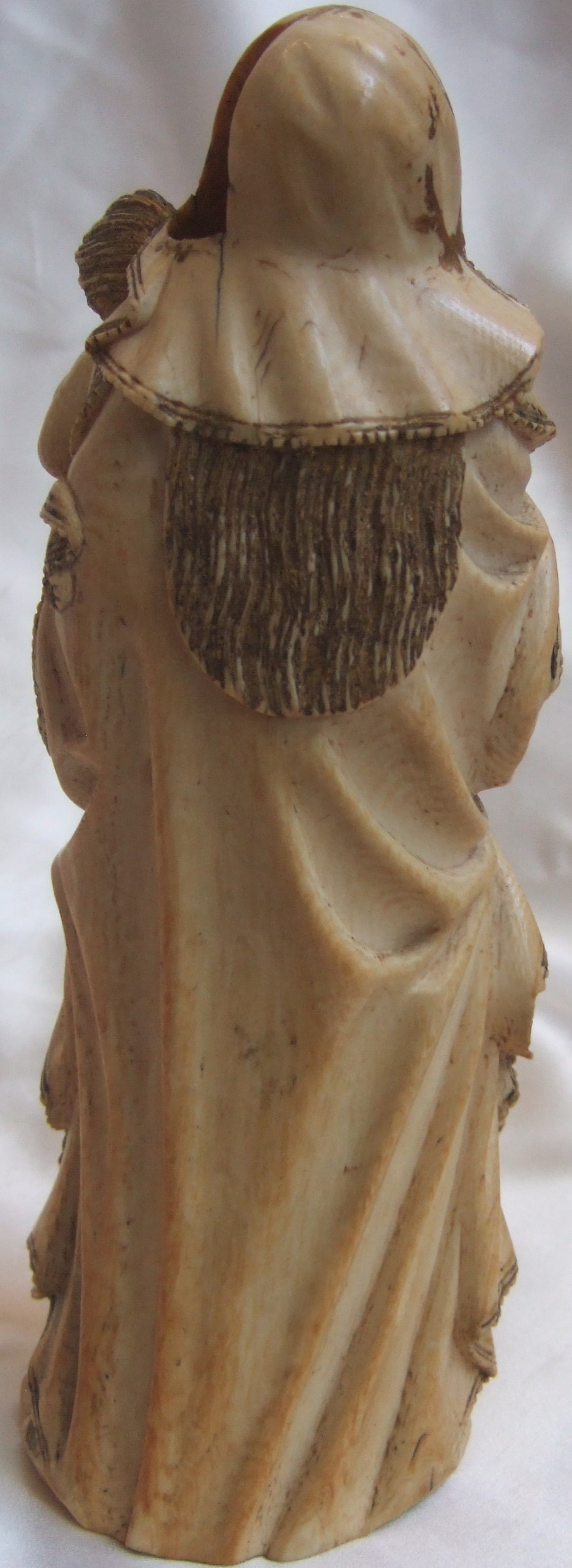Madonna & Child Savior of the World
Ivory
Indo-Portuguese
18th Century
8 x 3 x 2-1/3"
$160,000.00 plus shipping
Available
Description
Madonna & Child Savior of the World Antique Indo-Portuguese Carved Ivory Figure
This exquisite piece of religious art is a unique representation of Christian devotion and artistic virtuosity from the 18th century in the Indo-Portuguese context. Carved directly from ivory, the sculpture depicts the Virgin Mary holding the Baby Jesus in a representation known as the Savior of the World. The attention to detail in this work is impressive, from the folds of the robes to the serene expressions on the faces of the Virgin and the Child.
The style of this sculpture reflects the fusion of Portuguese and local Indian artistic influences during that period. The combination of decorative and symbolic elements creates a piece that transcends aesthetics and holds deep spiritual value. This sculpture is a testament to the faith and artistic skill of the era, connecting us to an important chapter in religious and cultural history.
The trade of Hispano-Filipino and Indo-Portuguese crafts dates back to the 16th century when the Spanish and Portuguese established their colonial empires in the Pacific. At that time, artisans from both empires began exchanging their products, leading to an exchange of cultural and artistic influences. It intensified in the 17th and 18th centuries as both colonial powers expanded their territories and economies. During this time, artisans from both empires began producing objects of art and craft that combined elements of their respective cultures. It continued until the 19th century when the two colonial empires began to decline. However, the exchange of cultural and artistic influences that occurred during this period left a lasting legacy in the arts and crafts of both empires.
In concrete terms, the trade of Hispano-Filipino and Indo-Portuguese crafts lasted for approximately three centuries, from the 16th century to the 19th century. Some examples of Hispano-Filipino and Indo-Portuguese crafts include:
Religious objects: sculptures, paintings, textiles, and metal objects representing Christian or Hindu religious themes.
Decorative objects: furniture, ceramics, jewelry, and other items used for home or workplace decoration.
Utilitarian objects: musical instruments, kitchen utensils, and other items used for everyday life.
The Indo-Portuguese style is characterized by the use of European decorative motifs, such as volutes and vases, combined with Indian architectural and decorative elements, such as the horseshoe arch and mosaic. The differences in the Hispano-Filipino style are found in the use of Spanish decorative motifs, such as the cross and the crown, combined with Filipino decorative elements, such as birds and flowers.
Both styles are appreciated by collectors for their beauty, uniqueness, and historical value. They bear witness to the meeting of two different cultures and the creation of something new and unique. Furthermore, these crafts are often finely crafted and made from high-quality materials, making them highly valuable and sought after by collectors.
The iconography of the Child Jesus Savior Mundi is a representation of Jesus Christ as a small child, holding an orb in His left hand and making a blessing gesture with His right hand. This representation is based on the Christian belief that Jesus Christ is the Savior of the World, and His mission is to save humanity from sin and death. This representation has been used in Christian art for centuries and can be found in a wide variety of media, including paintings, sculptures, mosaics, and stained glass.
Some specific examples of the iconography of the Child Jesus Savior Mundi include:
Leonardo da Vinci's painting "Salvator Mundi": This painting, believed to have been painted by Leonardo da Vinci in the 16th century, is one of the most famous examples of this representation.
The sculpture "The Infant Jesus of Prague": This sculpture, located in St. Vitus Cathedral in Prague, is one of the most venerated religious images in Europe.
El Greco's painting "The Child Jesus of the Passion": This painting, believed to have been painted by El Greco in the 16th century, is an example of the representation of the Child Jesus Savior Mundi with the crown of thorns wound on His forehead.
The iconography of the Child Jesus Savior Mundi is an important expression of the Christian faith. This representation reminds believers that Jesus Christ is the Savior of the World, and His love and grace are available to all.
Details
Material/Technique:
Ivory
Size:
8 x 3 x 2-1/3"
Date/Period:
18th Century
Style:
Indo-Portuguese
Questions or comments
You can email any questions or comments you may have about this treasure. Fill out the contact form and we will reply to you as soon as possible.




